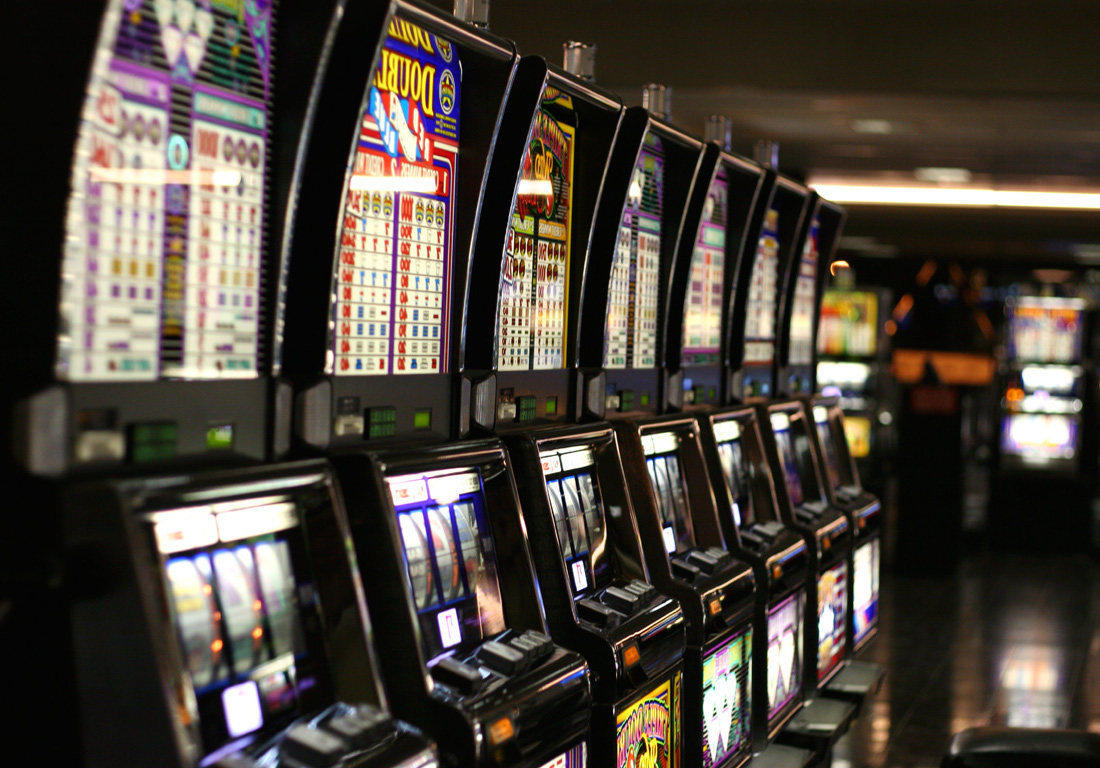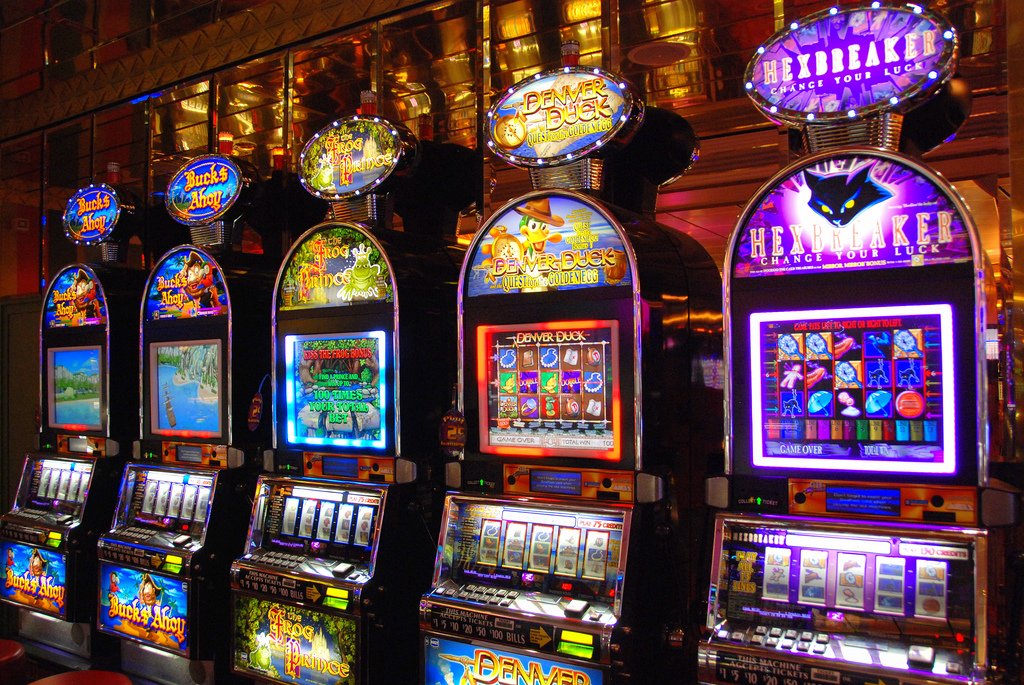Slot Machine Interface Design
Here’s the hard truth: casinos are designed to suck money out of your wallet. You may win some cash occasionally, but the casino always comes out on top. These smart casino businesses have carefully designed “traps” that lure you in and keep you playing for hours. Did you know that the sounds of the slot machine and the bonus games psychologically make you spend more? Ha! Well, it’s about time players wised up to these tricks employed by the casino industry. Only then can you truly make a bucks from playing at mobile casinos.
1. Sound Effects
Prior to Telnaes’ invention, slot machines were essentially mechanical devices. Besides being difficult to tune and maintain, mechanical slot machines suffered from an essential problem: Let’s look at a machine with three reels, each with 12 symbols, with one of those 12 symbols a cherry.
- Download this Vector Interface Slot Machine Complete Menu Of Graphical User Interface And Full Set Of Buttons For Classic Casino Games Creation Big Set Of Gaming Casino Icons vector illustration now. And search more of iStock's library of royalty-free vector art that features Ace graphics available for quick and easy download.
- Keywords: G2S (game to system) standards, slot machine accounting, game IT, protocol design, open source, embedded system 1 G2S Protocol Standards The casino industry keeps growing its size every year steadily, reaching to 159 billion dollars in 2014 world market at the increase rate of 9.3%. Among the casino games, the slot machine plays a key.
- Need unique graphic design for new slots or classic slot machines, impressive slot machine art? Hire us & get incredible slot machine game design.
Now, who would’ve guessed that sound impacts your gaming style? An experiment by the University of Waterloo shows that sound fools your brain into thinking that you have won. Besides providing a more enjoyable experience, sound also makes players overestimate how much they’ve won. If you’re not careful, these sneaky noises may cut into your ability to manage your bankroll. Of course, the clever slot makers exploit this fact; today’s slot games have about 400 sound effects! There’s the “ping” when you hit the spin button, the thematic background music, the build up, celebratory music; all of which add up to a stellar experience.
The software provider NetEnt employs this tactic most professionally. This company tasks an entire team with programming the music that accompanies its slot games. This music is also played dynamically according to the outcome of the game. Get a bigger win, and the sound amplifies. If you are close to a win, the music seems more anxious. You can get a glimpse of the musical magic in the video of Starburst below, which is one of NetEnt's most popular slots.
2. Bonus Rounds and Mini Games
Slot Machine Interface Design Tutorial
The slots scene is saturated with bonus games. There are so many different iterations too – pick one out of three, go around a board, spin the jackpot wheel, match two symbols. The best games integrate these diversions very well too and write them into the storyline of the game. I love them, along with many other slot players. I would keep playing a slot game with the sole aim of triggering the mini-game. These features are designed to hold our attention and keep us playing.
However, some of these games are more fun than they are profitable. Do check the paytable before playing – some mini games pay out a paltry 1-5x multiplier. A slot designer also revealed on reddit that, in some cases, the result of the bonus game would have been decided before you made your choice. How rude! It is simply how the software provider controls the payout percentages for each slot, and consequently, their profit margins. The lesson here is to never let mini-games shift your focus from the slot itself. You will never win the jackpot or strike it big from these features.

3. Near Misses
You know the frustration that comes about with near misses. You’ll score two out of three “jackpot” symbols needed to win the prize. Annoyingly, the third symbol would land just above or below the payline. Sometimes, these near-misses happen really often. Regular humans like you and me would hit spin again. To me, near-misses indicate that a win is due soon. Of course, my logic is flawed and mobile slots are completely random.
An outcome like this is psychologically arousing – it activates the same areas of the brain related to winning. In fact, it is even more exciting than small wins, as our brain anticipates the possible jackpot win when the first two symbols fall. Researchers at The University of Exeter discovered that these events even encourage slot play. Volunteers who were exposed to a higher frequency of ‘near misses’ would continue to play their mock slot machine. In comparison, volunteers who were exposed to a random likelihood of near-misses were three times less likely to continue playing. Moral of the story: treat near-misses the same as you would treat a loss.
4. Perceived Skill Involved
Take control of your winnings! Nudge the reels or gamble your winnings
Features such as “nudge” and “hold” buttons create the perception of skill and the illusion of control. The player thinks that they are affecting the outcome of the game. You should know better, since slots are based wholly on chance. Like mini-games, these features are designed to divert your attention. If you would actually like to control your winnings, you’d be better off playing actual skill-based games like poker or sports-betting.
The “gamble” feature is even more dangerous – it invites the player to chance his/her winnings on a game of coin toss. Win the toss and you’ll double your winnings, pick wrongly and lose all your winnings. The odds are 50/50, so which do you choose? I always recommend taking home the cash. Of course, a game of coin toss every once in a while is supremely fun!
5. Losses Disguised as Wins

Losses disguised as wins (LDW) is even more arousing than wins!
This is the meanest trick in the book. Some slot games disguise losses as wins. Take this example: you bet on 15 paylines at 10p each, spending a total of £1.50. Two of these paylines result in a winning combination, rewarding you with £0.90. The screens flash excitedly to celebrate your win. There is celebratory music too!

If you do the maths, you have actually lost 60p! Events like this happen even more frequently that you think, especially in games that allow you to wager on multiple lines at once. You should always keep an eye on the amount you’re spending per spin, so that your bank balance doesn’t diminish faster than it should.
Interface Design Psd
6. Frequent Wins but Small Payouts
Only 26p?!
Most slot games have a high win probability and very frequent payout intervals, but very low payout figures. This is because players like instant gratification. Proper big wins only occur once every 20 spins or so. Now, this aspect of the slots software is not random. Software developers actually hire specialist gaming mathematicians to design their slot games; it is perfectly legal to tweak the odds of different types of wins occurring.
Psychologist Mihaly Csikszentmihalyi calls this concept 'flow'. It arises when there is a perfect balance between stress and reward. If you aren’t rewarded often, you’ll get frustrated and stop playing. But if you get too many small wins, you’ll get bored. When challenge and success is balanced, the result is emotionally intoxicating. While it seems counter-productive to spend all your time playing small-win games, you won’t blow your bank balance too quickly. You won’t win much either, but this kind of fun is well-suited towards casual players.
I hope that this article has opened your eyes to the design process of slots. At times, it may seem like players are fighting a losing battle against these conniving casino men. From another perspective, you can appreciate how complex the slots industry has become. It has moved away from being purely about money and has evolved into a kind of entertainment. Always keep an eye on your bank balance and most importantly, have fun!
Slot machines are the most popular game in modern casinos. If you’ve never seen one, a slot machine resembles an arcade game that has a lever on its side. For a small fee you can pull the lever, and the machine will generate a random combination of three symbols. If the correct combination appears, you can win a prize, maybe even the jackpot.
Slot machines make fantastic profits for casinos because they offer a very low payout rate. In many games, such as Blackjack and Roulette, the odds are only slightly stacked in the casino’s favor. In the long run, the casino pays back 97 to 98 cents in prizes of every dollar that a gambler spends on these games. With slot machines, it is typical for a casino to only pay back 90 to 95 cents—and the casino keeps the rest. If this seems underhanded, keep in mind that slot machines are one of the most popular games at a casino; few people seem to mind. And if you consider that state lotteries have payout rates that are much closer to 50 cents on the dollar, slot machines don’t look that bad.
In this project, you will build a real, working slot machine modeled after some real life Video Lottery Terminals from Manitoba, Canada. The terminals were a source of scandal in the 1990s. You’ll get to the bottom of this scandal by writing a program that recreates the slot machines. You’ll then do some calculations and run some simulations that reveal the true payout rate of the machines.
This project will teach you how to write programs and run simulations in R. You will also learn how to:
Slot Machine Interface Design Tool
- Use a practical strategy to design programs
- Use
ifandelsestatements to tell R what to do when - Create lookup tables to find values
- Use
for,while, andrepeatloops to automate repetitive operations - Use S3 methods, R’s version of Object-Oriented Programming
- Measure the speed of R code
- Write fast, vectorized R code